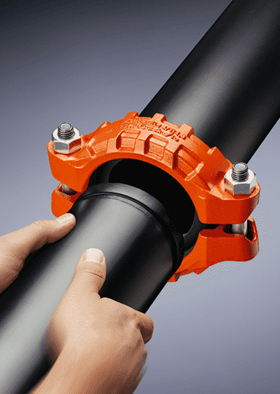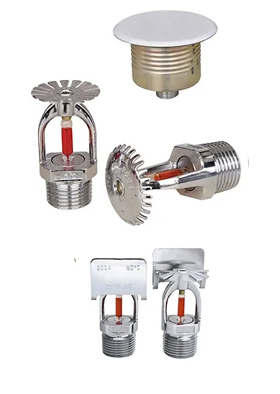Flexible Coupling
Pipe Joining Device
Pipe couplings play a vital role in industrial pipe joining and fire protection systems. These essential components provide secure and reliable connections between pipes, ensuring efficient flow of fluids or water for various industrial applications.
Benefits of Flexible Couplings
Misalignment Compensation
One of the key benefits of flexible couplings in pipe joining is their ability to compensate for pipe misalignment. Pipes may undergo slight shifts or misalignments due to settling, thermal expansion, or ground movement. Flexible couplings can accommodate these misalignments, ensuring a secure and leak-free connection even in challenging conditions. This ability to compensate for misalignment helps prevent stress and strain on the pipes, reducing the risk of leaks or pipe failures..
Vibration Dampening
In pipe systems where vibration is a concern, flexible couplings provide effective dampening capabilities. They can absorb and reduce the transmission of vibration, minimizing noise and preventing excessive stress on the pipes and connected equipment. By dampening vibration, flexible couplings contribute to a more stable and reliable pipe system.
Expansion and Contraction Accommodation
Pipes are subject to thermal expansion and contraction as temperatures fluctuate. Flexible couplings are designed to accommodate these movements, allowing the pipes to expand and contract without causing undue stress or strain on the system. This feature is particularly important in applications where temperature variations are common, ensuring the integrity of the pipe connections over time.
Corrosion Resistance
Flexible couplings are available in a range of materials, including corrosion-resistant options such as stainless steel or PVC. This corrosion resistance is essential in environments where pipes are exposed to moisture, chemicals, or other corrosive substances. By using corrosion-resistant flexible couplings, the longevity and reliability of the pipe system can be significantly enhanced.
Industrial Applications
Flexible couplings find extensive use in various industrial applications, including manufacturing facilities, chemical plants, and refineries. These industries rely on robust pipe systems to transport fluids, gases, or chemicals. Flexible couplings ensure secure connections that compensate for misalignment, vibration, and thermal expansion, ensuring the safe and efficient operation of the industrial processes.
Fire Sprinkler Systems Work
Fire sprinkler systems work by detecting heat and activating the sprinkler heads in the affected area. When a fire breaks out, the heat from the flames causes the sprinkler head to open, allowing water to flow out and extinguish the fire. The sprinkler heads are designed to activate only in the area where the fire is present, preventing unnecessary water damage to the rest of the building.
Types of Fire Sprinkler Systems
- Wet Pipe System
- Dry Pipe System
- Pre-action System
- Deluge System
Types of Fire Sprinkler Systems
Fire Safety Equipment
There are several types of fire sprinkler systems, each designed for specific types of buildings and environments.
| Model | Fire Sprinkler |
| Working Condition | Indoor |
| Response | Immediate |
| Temperature Rating | 57 -108 Degree C |
| Weight | 56 g |
| Rating |
Fire Sprinkler Wet Pipe System
A wet pipe system is the most common type of fire sprinkler system. It is a simple system that consists of pipes filled with water and connected to sprinkler heads throughout the building. When a fire is detected, the heat activates the sprinkler head, and water is immediately released.
Dry Pipe System
A dry pipe system is used in buildings where the temperature can drop below freezing, such as unheated warehouses. The pipes are filled with pressurized air or nitrogen, and the sprinkler heads are filled with water. When a fire is detected, the air or nitrogen is released, and the water flows out to extinguish the fire.
Pre-action System
A pre-action system is used in buildings where there is a high risk of water damage, such as data centers. The system is similar to a dry pipe system, but it requires two triggers to activate the sprinkler heads. First, the fire detection system must detect a fire, and then the sprinkler heads will open when a second trigger is activated, such as a heat or smoke detector.
Deluge System
A deluge system is used in high-risk areas, such as chemical storage facilities or power plants. The system consists of open nozzles that are attached to a piping system that is connected to a water supply. When a fire is detected, all of the nozzles release water simultaneously, flooding the area with water.


